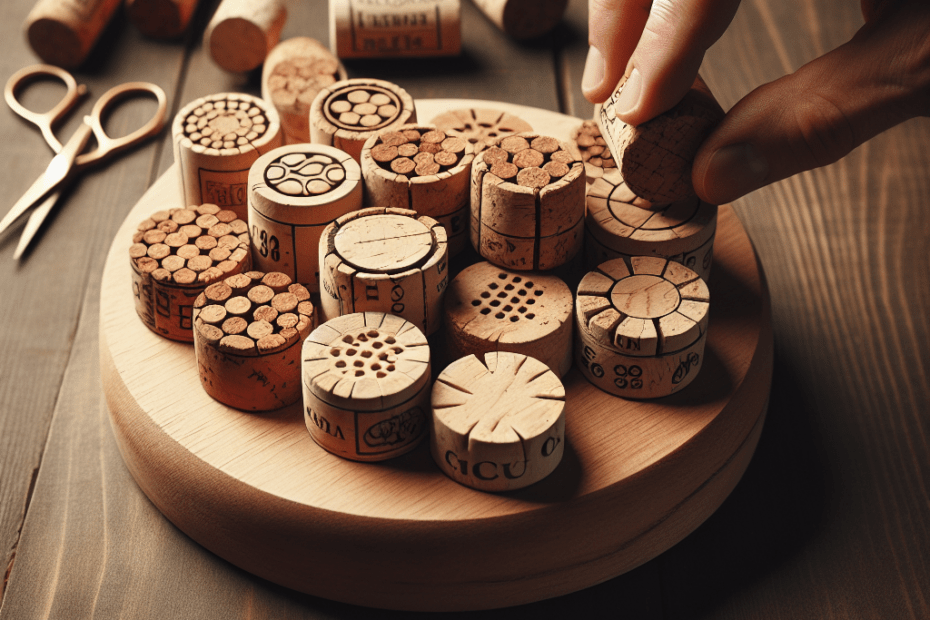“`html
If someone peered into their recycling bin, they might stumble upon items that could easily be transformed into something new and exciting. One such item is the humble wine cork. For those who enjoy a nice glass of wine, the act of saving corks can lead to a fun and creative DIY project: turning them into beautiful, functional coasters. Not only is this a wonderful way to preserve memories of shared bottles, it is also an excellent step toward sustainability. By upcycling wine corks into coasters, they give these small objects a second life, reducing waste in an appealing way.
Upcycling, also known as creative reuse, involves transforming waste into new products of higher quality or environmental value. A report from the Ellen MacArthur Foundation stated that upcycling plays a critical role in reducing the waste that ends up in landfills. With nearly 13 billion wine corks produced worldwide each year, according to Reuters, this creative endeavor can help address a significant portion of waste.
How to Create Upcycled Wine Cork Coasters
Transforming old wine corks into coasters is a simple yet fulfilling process that requires only a few materials and tools. Below are the steps and necessary items to get started:
Materials
- Approximately 8-10 wine corks per coaster
- Hot glue gun or strong adhesive
- Sharp knife or cutting tool
- Sandpaper
- Optional: non-slip backing material
Steps
- Prepare the Wine Corks: Begin by gathering a collection of wine corks. They should inspect for mold and ensure each cork is dry. It helps to have a range of textured and colored corks for visual diversity.
- Cut the Corks: Carefully cut each cork into circular slices, about a quarter of an inch thick. This can be done using a sharp blade, ensuring steady and precise cuts.
- Arrange the Pieces: Arrange the cut cork pieces into a circular pattern, ensuring they snugly fit together. Experiment with different arrangements until they’re satisfied with how the coasters look.
- Glue the Configuration: Using the hot glue gun or strong adhesive, affix each piece onto a flat surface or a backing material of their choice, such as craft foam or recycled cardboard. Apply pressure to ensure each piece is securely glued.
- Finishing Touches: Once the pieces are firmly in place, utilize sandpaper to smooth down any rough edges. Optionally, they can affix a non-slip material to the back of the coaster to enhance its grip.
This project doesn’t just result in eye-catching coasters—it also serves as a thoughtful gift option for family and friends. Plus, by creating upcycled wine cork coasters, individuals contribute to the environmental movement and help reduce waste.
The Environmental Impact of Upcycling
In an era where environmental concerns are more pressing than ever, upcycling has emerged as a creative solution for consumers and the planet alike. According to NRDC (Natural Resources Defense Council), it is estimated that 40% of waste could be prevented through better materials management. Projects like crafting coasters from wine corks play a part in this initiative by repurposing materials that would otherwise contribute to landfills.
Key Takeaways
- Upcycling transforms waste into valuable products, contributing to waste reduction.
- You can create beautiful, functional coasters using leftover wine corks with minimal materials.
- This project supports eco-friendly practices by reducing waste and repurposing materials.
- Upcycled wine cork coasters make great gifts and preserve memories of enjoyable occasions.
| Material | Usage |
|---|---|
| Wine Corks | Primary material for coaster creation |
| Adhesive | Secures cork slices together |
| Cutting Tool | Slices corks evenly |
| Sandpaper | Smooths down rough edges |
| Optional Backing | Enhances stability and non-slip features |
FAQs
- What types of adhesives are best for this project? Strong adhesives such as hot glue or strong craft glue work well for securing cork pieces.
- How many wine corks do I need for one coaster? They typically need 8-10 wine corks to make a single coaster.
- Can I use plastic corks instead of natural corks? While plastic corks can be used, natural corks give a more authentic, aesthetic look to the coasters.
- Is it necessary to use non-slip material on the back of the coasters? It’s optional but recommended for surfaces prone to slipping or sliding.
- Are there other sustainable uses for leftover wine corks? Yes, corks can also be used for other projects like creating bulletin boards, keychains, and more.
“`
This article not only provides a step-by-step DIY guide for creating upcycled wine cork coasters but highlights the importance of waste reduction and the benefits of upcycling. By using semantically related keywords like recycling, environmental impact, and sustainability, it aims to reach those looking to adopt eco-friendly practices.
